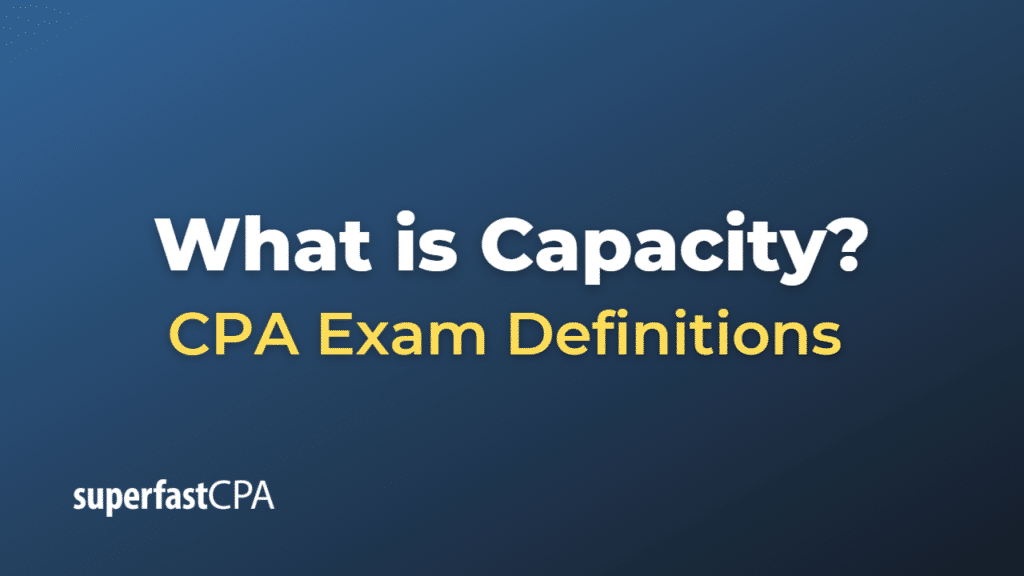Capacity
In the context of finance and economics, “capacity” has several meanings depending on the specific area in which it is used. Here are three common interpretations of capacity:
- Production Capacity: In the context of manufacturing and business operations, capacity refers to the maximum level of output or production that a company or facility can achieve using its available resources, such as labor, machinery, and raw materials. Production capacity is an important measure of a company’s ability to meet demand, scale its operations, and ultimately grow its business.
- Debt Capacity: In the context of borrowing and lending, capacity refers to an individual’s or organization’s ability to take on and manage debt, based on their income, assets, and financial stability. Lenders evaluate a borrower’s capacity to ensure they can repay a loan, usually by analyzing factors such as debt-to-income ratio, credit history, employment status, and the stability of their income sources. A borrower with a high debt capacity is generally considered to be a lower credit risk.
- Capacity Utilization: In the context of macroeconomics, capacity utilization refers to the percentage of an economy’s potential output that is actually being produced. It is a measure of how effectively an economy is using its resources, such as labor and capital, to produce goods and services. High capacity utilization typically indicates strong demand and efficient use of resources, while low capacity utilization suggests weak demand or underutilization of resources, which can lead to unemployment and decreased economic growth.
The meaning of “capacity” may vary depending on the context, but it generally relates to the ability of an entity, whether a business, individual, or economy, to produce, manage resources, or take on debt.
Example of Capacity
Let’s consider an example for each of the three common interpretations of capacity mentioned previously.
- Production Capacity: Imagine a car manufacturing plant that can produce a maximum of 1,000 cars per month using its available resources, such as labor, machinery, and raw materials. The production capacity of this plant is 1,000 cars per month. If the demand for cars increases, the plant may need to expand its capacity by investing in additional resources, such as hiring more workers, purchasing new machinery, or increasing production hours to meet the higher demand.
- Debt Capacity: Suppose Jane is applying for a mortgage to buy a house. The bank will evaluate her debt capacity to ensure that she can afford the monthly mortgage payments. They will consider her income, employment history, credit score, and existing debts (such as student loans or car payments) to determine how much she can reasonably borrow. If Jane has a stable job with a high salary, low existing debt, and a good credit history, the bank may determine that she has a high debt capacity and approve her for a larger mortgage.
- Capacity Utilization: Imagine a country that has the potential to produce $1 trillion worth of goods and services in a year (based on its labor force, capital stock, and other resources). However, due to weak demand or other factors, the country is only producing $800 billion worth of goods and services annually. In this case, the country’s capacity utilization is 80% ($800 billion / $1 trillion), indicating that it is not using its resources to their full potential. Policymakers may seek to stimulate demand or implement other measures to increase capacity utilization and promote economic growth.













